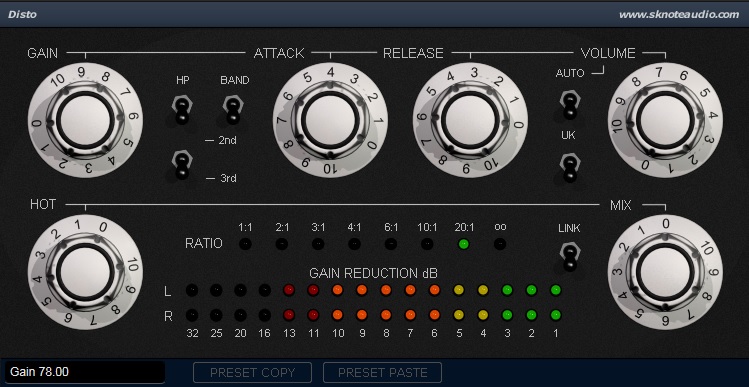Disto-S includes the Auto-Gain feature. It matches RMS levels between input and output signals.
The definition of “level-matching” can be a bit fuzzy, actually. While it is well defined on a steady signal (a tone), it is not on an audio track, like some drumming.
When engaged, auto-gain does two things:
- First, if you are increasing the input Gain, decreases the output Volume as a first matching. This behaviour prevents strong peaks if you increase the input Gain all at once.
- Then, it starts monitoring audio and matching input and output. You’ll see small adjustments on the Volume knob but it could hold on if there is no audio passing through, to start again when some audio starts passing again.
The main thing to remember to use it is that you should always compare the output level when the effect is engaged to the audio level when the whole processor is disabled. This is different from trying to match a setting to another one. Bypassed output level is aways the reference. A net result is that all the programmed presets will sound at the same level if programmed with auto-gain active.
Auto-gain (when the auto-gain switch is engaged) is triggered by any control that could affect the output level:
- Input gain.
- Attack.
- Release.
- Ratio.
- Hottitude (internal levels calibration).
- HP and Band.
- Mix.
Note: the Auto-Gain feature is being activated in Disto-R (which keeps the shape of the current v.2), too.
